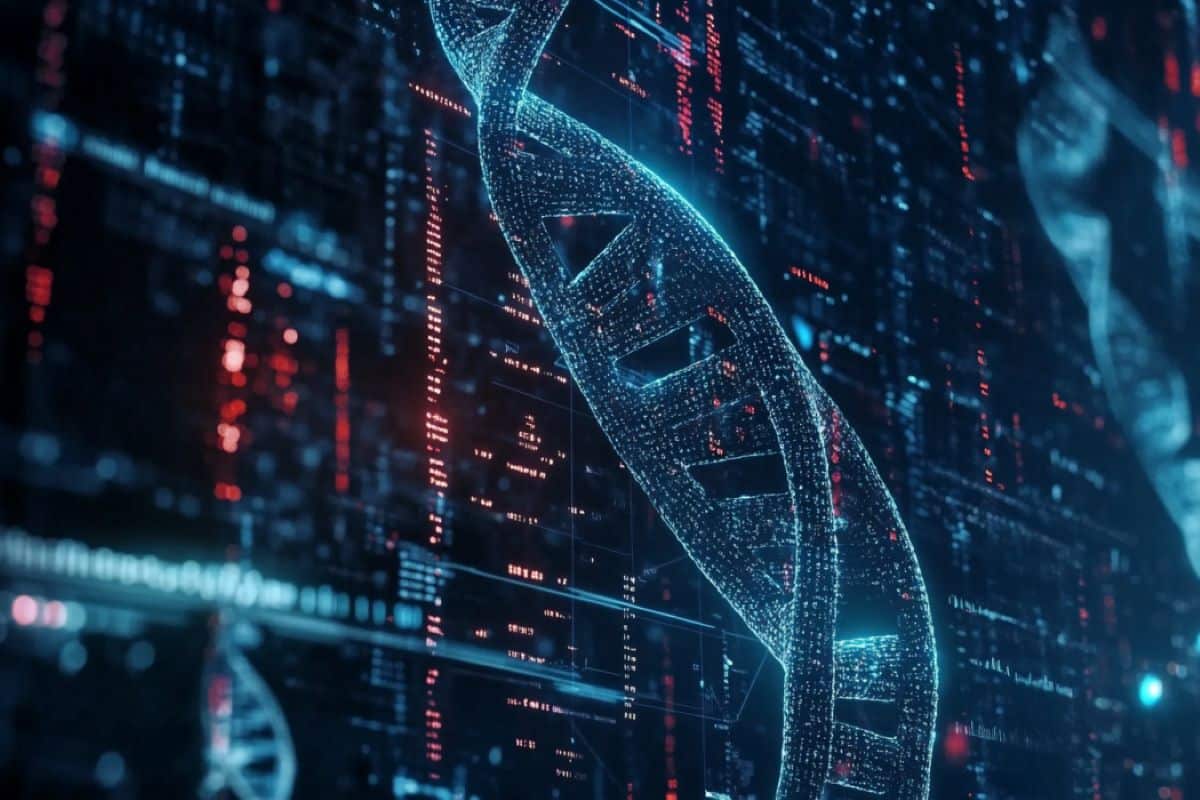AI Cracks the Code of Life: New Language Model Decodes DNA Secrets

Scientists have developed GROVER, a powerful AI language model, to decipher the intricate language of DNA. This groundbreaking technology treats our genome as a text, learning its rules and context to unlock hidden biological information.
Developed by a team at the Biotechnology Center (BIOTEC) of Dresden University of Technology, GROVER marks a significant step forward in understanding the complexities of our genetic code. It has the potential to revolutionise genomics and personalised medicine, offering deeper insights into human biology and disease.
The research, published in *Nature Machine Intelligence*, tackles the long-standing scientific challenge of interpreting the information encoded within DNA. While scientists have known about the double helix structure for over 70 years, it remains a mystery how the vast majority of our DNA functions. Only a small fraction â around 1-2% â contains genes, the sequences that code for proteins.
"DNA has a wealth of functions beyond protein coding," explains Dr. Anna Poetsch, research group leader at BIOTEC. "Some sequences regulate genes, others are structural, and many have multiple roles. We're only beginning to grasp the meaning of most of our DNA."
This is where AI and large language models like GROVER come into play. Inspired by the success of language models like GPT, which have revolutionised our understanding of human language, the researchers treated DNA as a text.
"DNA is the code of life," says Dr. Poetsch, "so why not treat it like a language?"
GROVER, named for "Genome Rules Obtained via Extracted Representations", was trained on a reference human genome. It learned the grammar, syntax and semantics of DNA sequences â the rules governing their order and meaning.
"GROVER has essentially learned to 'speak' DNA," says Dr. Melissa Sanabria, the researcher behind the project.
The team demonstrated that GROVER can not only predict the next sequence in a DNA strand but can also identify key biological features, such as gene promoters and protein binding sites. Moreover, GROVER is able to grasp epigenetic processes â regulatory mechanisms that operate on top of the DNA itself.
âIt's fascinating that by training GROVER solely on the DNA sequence, without any annotations of functions, we can extract information on biological function,â says Dr. Sanabria. âThis shows that the function, including some epigenetic information, is encoded within the sequence.â
One key challenge for the researchers was creating a âDNA dictionaryâ to train GROVER. They used a technique borrowed from compression algorithms to break down the genome into "words" â common combinations of the four DNA letters (A, T, G, and C).
âThis step is crucial and sets our DNA language model apart from previous attempts,â says Dr. Poetsch.
With the help of this dictionary, GROVER is able to learn and understand the intricacies of DNA sequences, opening up exciting new possibilities for genomics and personalized medicine.
âWe believe that understanding the rules of DNA through a language model will help us uncover the depths of biological meaning hidden in the DNA,â concludes Dr. Poetsch. âThis will advance both genomics and personalised medicine.â





